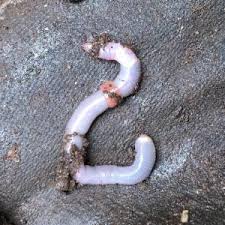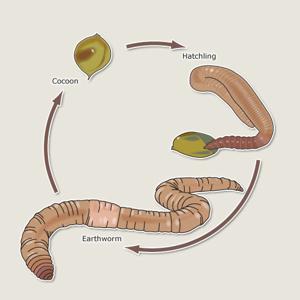Octolasion cyaneum: Difference between revisions
No edit summary |
|||
| Line 1: | Line 1: | ||
Octolasion cyaneum, a blue gray worm, is in the family Lumbricidae that are the dominant earthworms of pastures and croplands of Europe | Octolasion cyaneum, a blue gray worm considered an invasive species in the U.S., is in the family Lumbricidae that are the dominant earthworms of pastures and croplands of Europe [taif]. They are large sluggish species mostly found in the topsoil of low-fertility pastures on many [[soil]] types [.]. They originated in Europe and were brought to New Zealand through either ballast ships or imported plants by early European settlers [.]. O. cyaneum feed on fresh [[Organic Matter|organic matter]], [[microorganisms]], and large quantities of soil and accompanied organic residues [.]. | ||
{| class="wikitable" style="text-align:center; float:right; margin-left: 10px; | {| class="wikitable" style="text-align:center; float:right; margin-left: 10px; | ||
| Line 40: | Line 40: | ||
==Life Cycle== | ==Life Cycle== | ||
[[File:Octo_Life_cycle.jpg|600px|thumb|left|Octolasion cyaneum life cycle]] | [[File:Octo_Life_cycle.jpg|600px|thumb|left|Octolasion cyaneum life cycle]] | ||
O. cyaneum are hermaphrodites, possessing both male and female reproductive organs [phil]. The common mode of reproduction is parthenogenesis that results in the production of genetically homogeneous clones in populations founded on one or only few individuals [.]. They produce either one hatching (singleton) or two hatchings (twins) per cocoon, which are rare but not impossible [.]. The mature O. cyaneum display a citellum on the front portion of the body that is used for reproduction [phil]. O. cyaneum prefer environments that have high values of [[porosity]] and C content, | O. cyaneum are hermaphrodites, possessing both male and female reproductive organs [phil]. The common mode of reproduction is parthenogenesis that results in the production of genetically homogeneous clones in populations founded on one or only few individuals [.]. They produce either one hatching (singleton) or two hatchings (twins) per cocoon, which are rare but not impossible [.]. The mature O. cyaneum display a citellum on the front portion of the body that is used for reproduction [phil]. O. cyaneum prefer environments that have high values of [[porosity]] and C content, soils with a pH of 5.5-8, and moist soil for development, buckwheat [[rhizosphere]] being the best [kli][taif]. | ||
==References== | ==References== | ||
Revision as of 14:43, 29 April 2025
Octolasion cyaneum, a blue gray worm considered an invasive species in the U.S., is in the family Lumbricidae that are the dominant earthworms of pastures and croplands of Europe [taif]. They are large sluggish species mostly found in the topsoil of low-fertility pastures on many soil types [.]. They originated in Europe and were brought to New Zealand through either ballast ships or imported plants by early European settlers [.]. O. cyaneum feed on fresh organic matter, microorganisms, and large quantities of soil and accompanied organic residues [.].
 | |
| Kingdom: | Animalia |
|---|---|
| Phylum: | Annelida |
| Class: | Citellata |
| Order: | Crassiclitellata |
| Family: | Lumbricidae |
| Genus: | Octolasion |
| Species: | Octolasion cyaneum |
Range
O. cyaneum is a temperate endogenic species, meaning that they are soil dwelling species that live and feed within the soil rather than above, found throughout Europe, America, Australia, northern India, and Pakistan [low][kli]. Its widespread geographical distribution predisposes them as a subject for ecological assessment and chronic toxicity studies [low].
Ecology
Behavior
Life Cycle

O. cyaneum are hermaphrodites, possessing both male and female reproductive organs [phil]. The common mode of reproduction is parthenogenesis that results in the production of genetically homogeneous clones in populations founded on one or only few individuals [.]. They produce either one hatching (singleton) or two hatchings (twins) per cocoon, which are rare but not impossible [.]. The mature O. cyaneum display a citellum on the front portion of the body that is used for reproduction [phil]. O. cyaneum prefer environments that have high values of porosity and C content, soils with a pH of 5.5-8, and moist soil for development, buckwheat rhizosphere being the best [kli][taif].